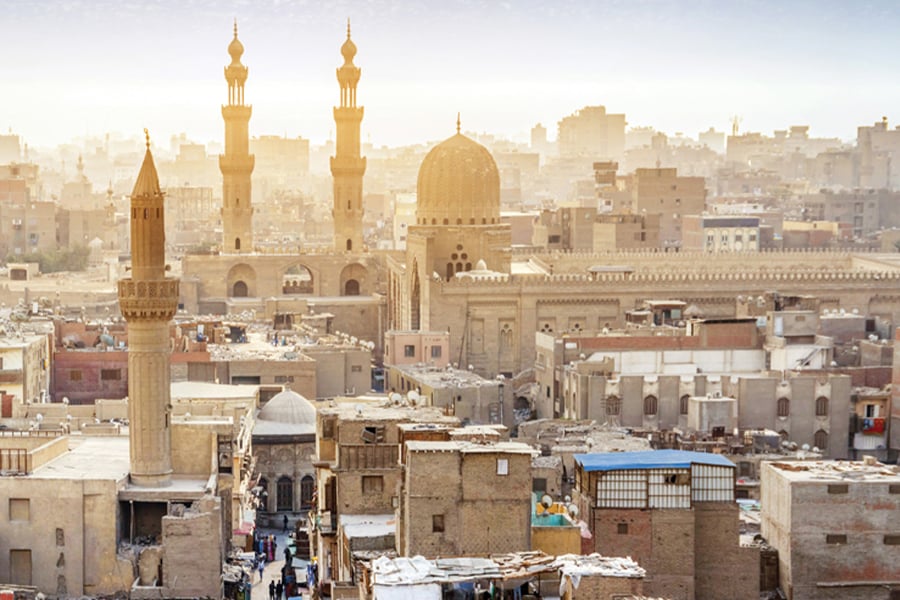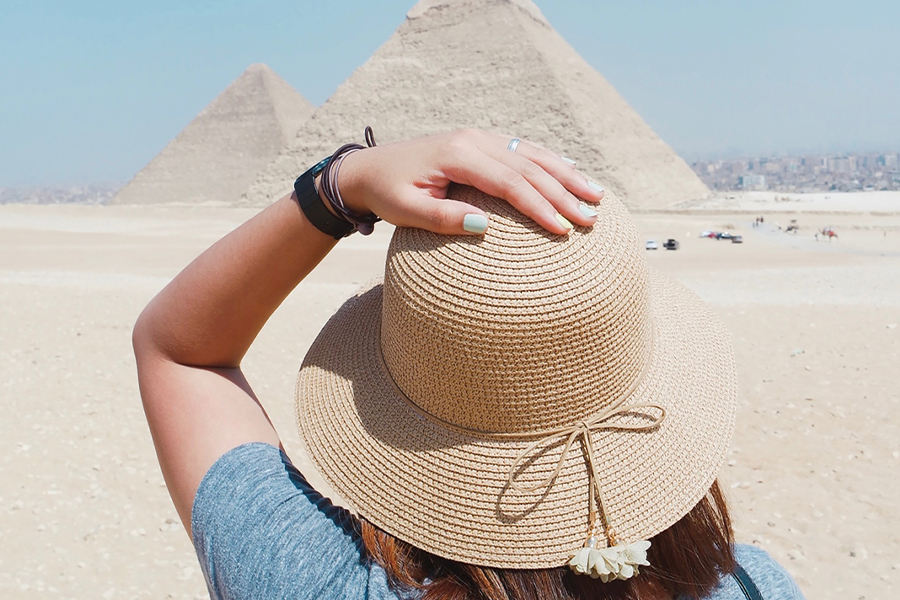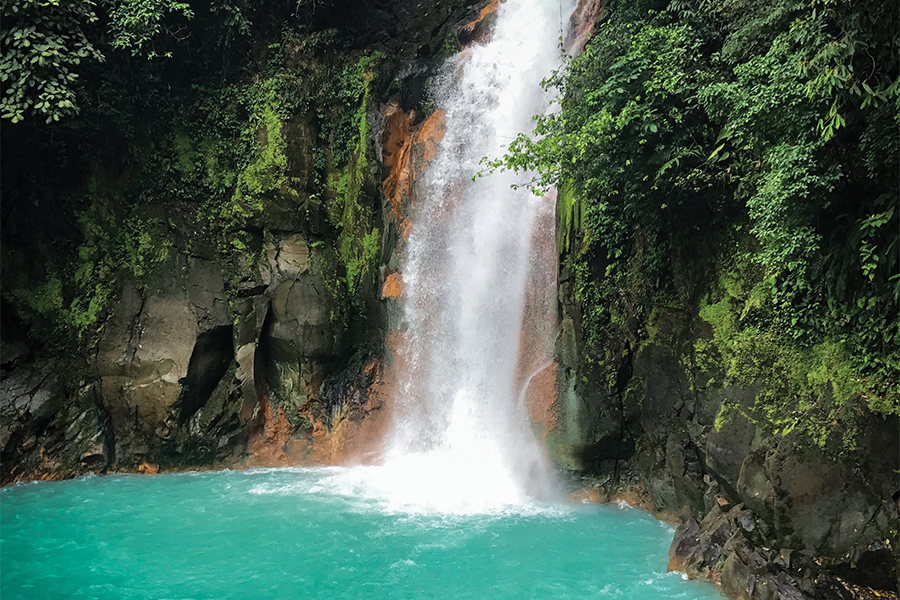The Enduring Allure of Egypt

Perhaps no country in modern times has captivated visitors with such unbridled curiosity as Egypt. Five thousand years of antiquities uncovered everywhere from the Mediterranean coast to the lush Nile River delta have dependably lured tourists for centuries. However, as any AAA Travel Advisor will attest, no country is immune to the challenge of an economic slowdown or political upheaval. In 2011, much of the world was emerging from the Great Recession. At the same time, Egypt was in the throes of a political revolution, and tourism fell sharply as a result. In 2010, an all-time high of 14.7 million people visited Egypt—in 2015, this number plummeted to 4.8 million.
Egypt's Re-emergince as a Prime Tourist Destination
Thanks to an improved economy, lower prices and much tighter security, tourists are returning to the land of the pharaohs. Like the sacred Bennu phoenix, a heron-like bird that symbolized creation and renewal in early Egyptian mythology, Egypt is re-emerging as a prime tourist destination once again. In fact, Robert Drumm, president of Alexander + Roberts, a AAA Travel partner who has offered small group journeys to Egypt since the mid-‘60s (on Pan Am Charters, no less!), believes there’s no better time to visit than right now.
“Egypt is enjoying a stable government, stabilized civic life and best of all, crowds haven’t peaked yet,” Drumm notes. He acknowledges that some people still feel apprehensive about security when considering the journey. “Understandably, travelers want to know if it’s safe, and my answer to that question is a resounding ‘yes.’ We specialize in small groups with no more than 16 people traveling together at one time, security on every coach and smaller, more intimate accommodations that don’t attract huge crowds.” Alexander + Roberts travelers also enjoy fantastic views of the Nile at Cairo’s five-star Kempinski Hotel, and they share company with just 44 fellow guests onboard the luxury Oberoi ships cruising the Nile River between Luxor and Aswan.
Longer tours of Egypt include time in lovely Alexandria, Cleopatra’s birthplace on the Mediterranean coast. Here, tourists savor light ocean breezes and dine on seafood delicacies at lively waterfront cafés. It’s a delightful prelude to the sprawling capital, Cairo, where ancient customs and modern life converge. “It’s a frenetic city full of activity, allure and granular existence,” says David Semerad, business development manager for AAA Member Choice Vacations, another AAA Travel partner. A former tour guide himself, Semerad knows a thing or two about navigating foreign cities. “It’s a little rough around the edges, but there is an exhilarating quality to the chaos. The constant buzz of humanity in the streets and bazaars and the aromas of exotic dishes are a dramatic contrast to the Nile River’s pristine shoreline and quiet, historic neighborhoods.”
The Ancient Wonders
All Egyptian tours devote considerable time to exploring the marvels of ancient antiquities, and most start with the stunning collection of monuments located just beyond the Cairo city limits on the Giza plateau. There are about 80 pyramids uncovered in Egypt so far, but perhaps the most well known are found here, including the Great Pyramid, built for Khufu, the second pharaoh of the fourth dynasty. Today it is one of the Seven Wonders of the Ancient World, drawing thousands of visitors each day. Most theories suggest that thousands of laborers worked around the clock for about 30 years to build a pyramid so the remains of deceased pharaohs had a proper entrance on their journey into the afterlife. “But we’re still learning about all this,” says Drumm. “Only about one-third of Egypt’s tombs have been found so far.”
Not far from the cluster of pyramids lies the Great Sphinx, a massive limestone statue of a reclining beast, with the body of a loin and a face that some believe represent Pharaoh Khafre (Khufu’s son). Carved out of bedrock (possibly during Khafre’s reign between 2520 and 2494B.C.), it’s 240 feet long and over 66 feet high. Alexander + Roberts guests have the unique opportunity to stand between the giant paws for a photo with the creature as part of an exclusive presentation and field talk with local Egyptologist, Ashraf Mohie El-Din.

The Nile Excursion
After a day wandering the bazaars, squares and historic sights of Old Cairo, most travelers hop on a short flight to Luxor for a journey down the Nile. “It is a magical experience,” says Semrad. “With the majority of Egypt’s population living along the river, one gets constant snapshots of uninterrupted everyday life. Plus, its great food and customer service are second to none.”
Before sailing away, guests visit Luxor’s famed Karnak Temple, a vast complex of buildings and places of worship used by approximately 30 pharaohs from 2050 B.C. through the Roman conquest and death of Cleopatra around 30 B.C. A skilled Egyptologist accompanies Alexander +Roberts groups as they wander alongside a 2-mile stretch of stone sphinxes to the ancient Luxor Temple, built around the 14th century. The next day, it’s off to the fabled Valley of the Kings and Queens, where 64 Egyptian rulers are buried in 1,000 feet of sedimentary rock, and the massive twin statues of 18th dynasty ruler Amenhotep III stand like sentinels above the desert. “This visit was a highlight of the trip for me,” says AAA Minneapolis traveler Tanya Johnson, who recently joined an Alexander + Roberts group with her mother, Diana. They were especially impressed with the color and detail of the hieroglyphics adorning the walls. “It was nothing short of incredible,” she says.
The cruise culminates with a visit to a modern-day engineering marvel, the Aswan High Dam. Built across the Nile in the 1960s to control flooding along the river’s floodplain and delta, the dam is over 300 feet high, providing power to nearly every corner of Egypt. The high waters of the dam once threatened the famous ancient rock temples of Abu Simbel, located downriver near the border of Sudan. Here, the popular pharaoh Ramesses II oversaw the construction of the massive structures to not only honor himself and his wife, but also to impress the people of this natural resource-rich area of southern Egypt. The temples were completed around 1244 B.C., but over time they became forgotten and buried by sand until 1813, when they were discovered by Swiss historian Jean-Louis Burckhardt and later relocated to higher ground. Today, they’re a highlight on most Egyptian tours.
On the Horizon: Upcoming Attractions
The Grand Egyptian Museum, scheduled to open in 2020 near the Giza pyramids, is approximately 500,000 square meters and will display thousands of ancient relics—many for the first time. The star attraction: the entire collection of artifacts from the tomb of the young “boy king” Tutankhamun. “Until now, there wasn’t enough space to display such a vast collection, nor was the air quality ideal. These fragile pieces are especially vulnerable to sandstorms and pollution,” says Drumm. “The new museum offers better air quality and higher ceilings to accommodate taller structures that once stood exposed to the elements.”
Robust tourism is returning to Egypt, in part because tour companies like Alexander + Roberts and Member Choice Vacations are delivering high-quality, safe experiences with friendly hosts. For traveler Tanya Johnson, having a security guard travel with her group for the entire tour added to her feeling of safety and comfortability. “Our Egyptologist was one of the kindest men I have ever met, allowing us to pepper him endlessly for his insights,” she notes. “He took care of our tickets at every destination, joined us at every meal and provided useful shopping advice, pointing out both the authentic Egyptian treasures and the less valuable trinkets. I teared up saying goodbye to him because he had conveyed not only how much he knew, but how much he loved his country.”
Solo Travel and Private Tours in Egypt
Singles are often drawn to the congenial atmosphere of smaller groups because it’s easier to get to know everyone, but privately organized tours have also grown in popularity. “In Egypt, these arrangements don’t cost much more per person than small groups, so they’re now nearly 30 percent of our tourism numbers,” says Drumm. “These arrangements are ideal for couples traveling together in a smaller vehicle with their own tour guide, and they’re an outstanding option for anyone with a physical impairment looking for a little more flexibility.” No matter how you travel, Drumm notes that Egyptians are some of the nicest, most welcoming people you will meet. “They’re easy-going, caring and simply terrific hosts.”
From the Travel Experts
Three AAA Minneapolis Travel Advisors—Chris Anderson, Dawn McDaniel and Deborah Benson—recently participated in a AAA Member Choice Vacations 10-night Egypt tour. Here’s what surprised and delighted them most:
Chris Anderson
“I have often traveled independently, so I would have assumed that getting around Egypt would be easy enough, even if I’m not on a tour. In fact, trying to go independently would be doing yourself a huge disservice, because you wouldn’t learn as much, and you’d be frantic getting from point A to point B. Also, I expected to lose weight, but we ate well. The food was very similar to Greek and eastern Mediterranean fare—baklavas, Greek salad, gyros, kabobs, and pilav—delicious!"
Dawn McDaniel
“I was not prepared for the vision of Cairo as we were landing. With 19.5 million people living there, it’s an indescribable sea of sand-colored buildings that goes on forever. Our Alexandria tour guide, Mahmoud, asked us if we would like to try something different. We were all game, so they drove us into the city center to a little place selling freshly squeezed sugar cane. It was amazing! Not at all like a glass of sugar water, but more like a cream soda without the fizz.”
Deborah Benson
“My biggest thrill was viewing the pyramids. I knew they were big, but standing next to them is an unbelievable experience. We climbed inside to the top of a pyramid at the Giza Plateau. Then, to top it off, we met the new director general of the Giza Plateau and got a private tour into a just-discovered tomb and cemetery, and the news of the discovery hit the press the day after we saw it!”





